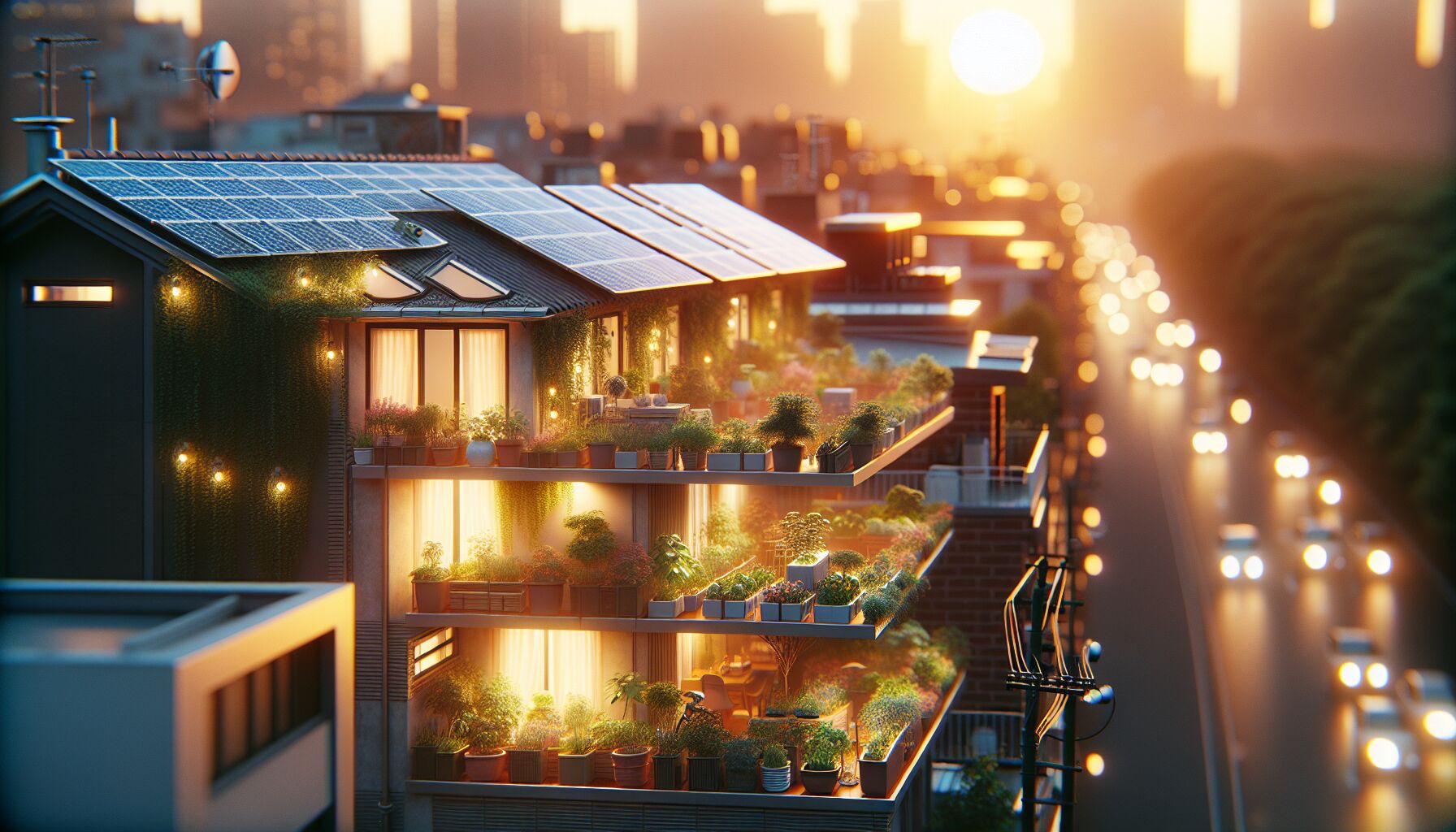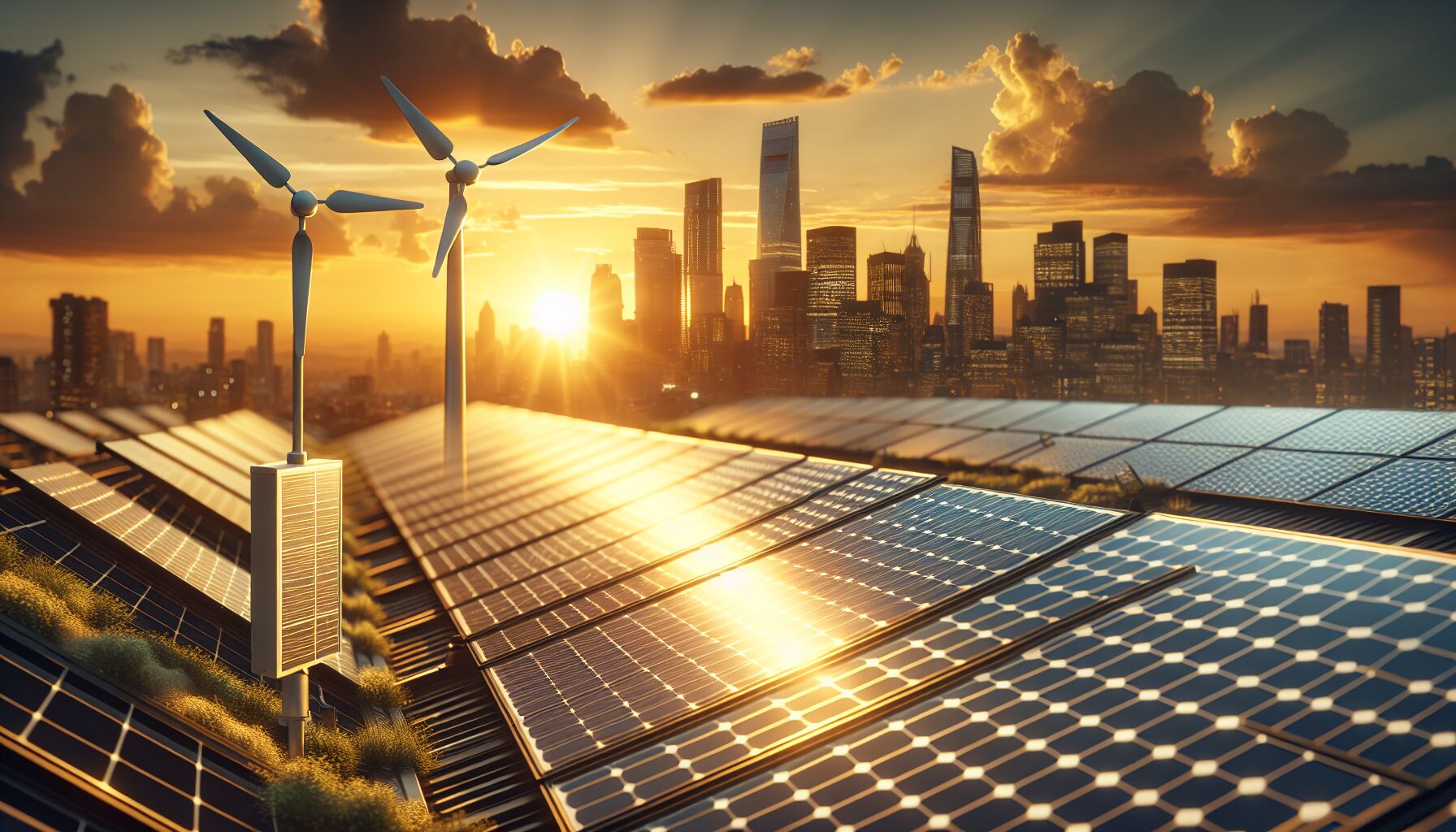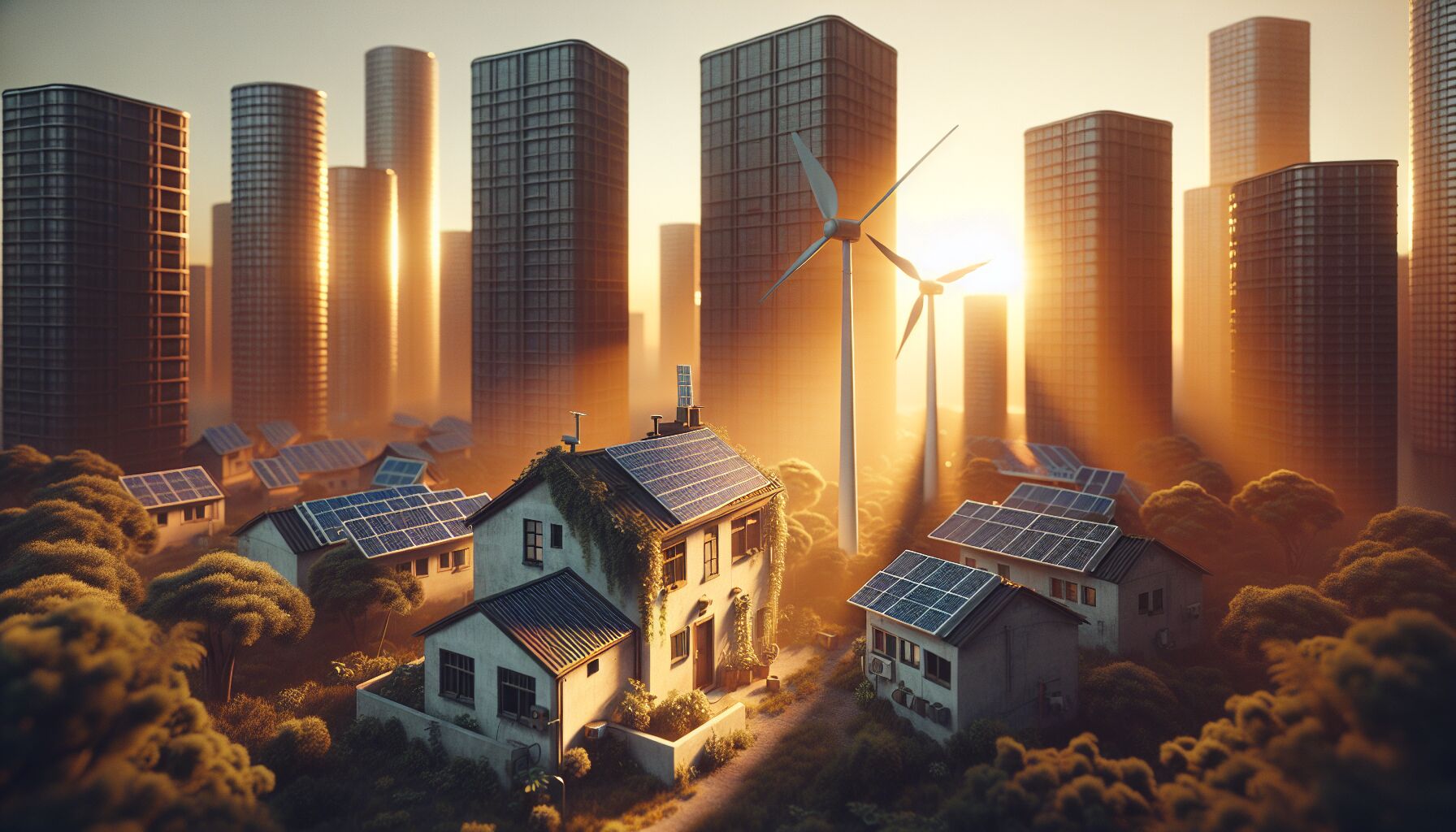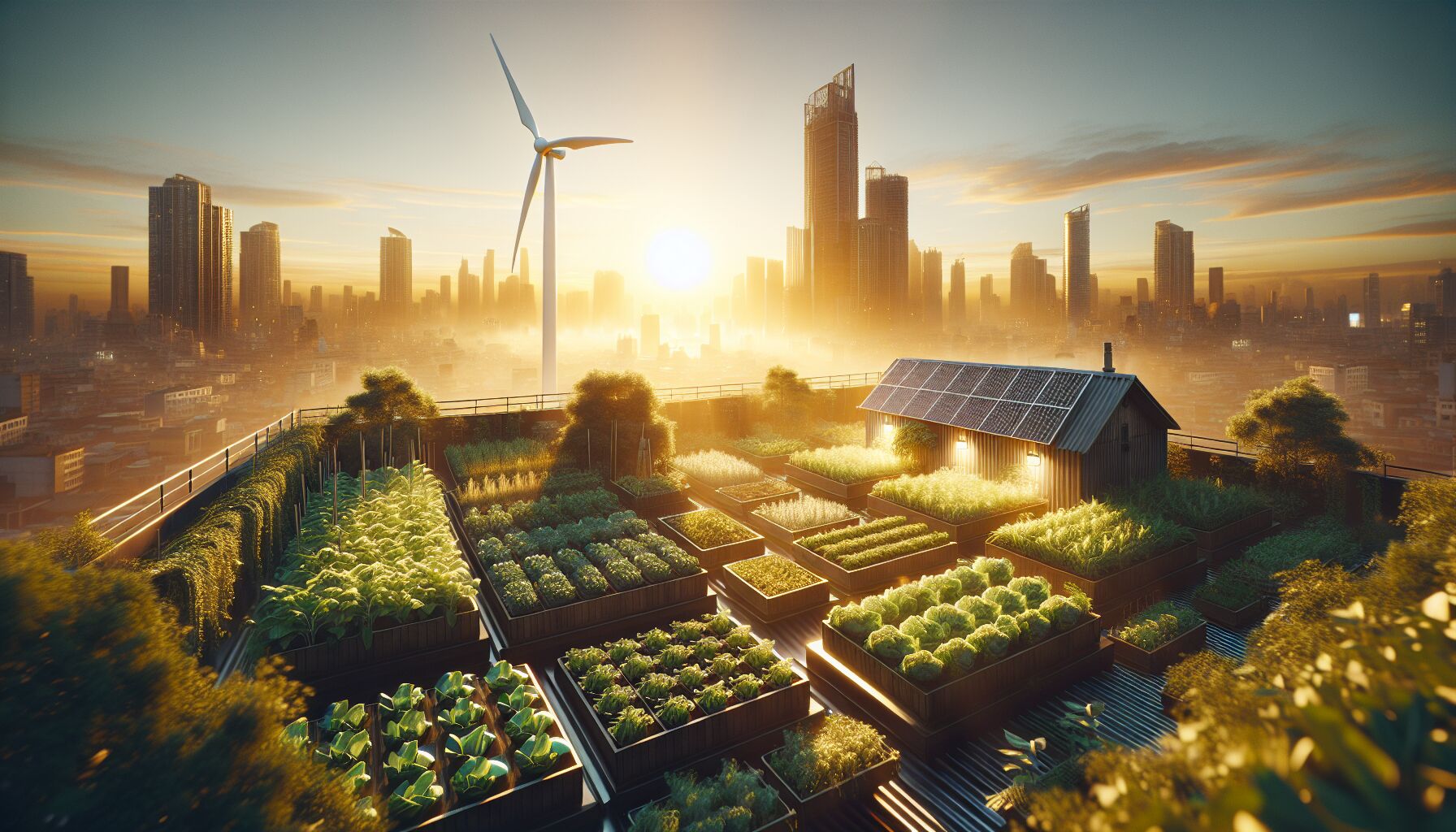 Living off-grid in a city might sound like a contradiction—after all, isn’t the whole idea of “off-grid” about escaping the urban sprawl? But let’s flip that assumption on its head. Urban off-grid living isn’t about isolating yourself from society; it’s about creating a more independent, self-sufficient lifestyle while still being part of the city’s energy and resource-hungry ecosystem. You don’t need a cabin in the woods to break free from dependence on municipal utilities—just a shift in mindset and some creative problem-solving.
Living off-grid in a city might sound like a contradiction—after all, isn’t the whole idea of “off-grid” about escaping the urban sprawl? But let’s flip that assumption on its head. Urban off-grid living isn’t about isolating yourself from society; it’s about creating a more independent, self-sufficient lifestyle while still being part of the city’s energy and resource-hungry ecosystem. You don’t need a cabin in the woods to break free from dependence on municipal utilities—just a shift in mindset and some creative problem-solving.
At its core, going off-grid in an urban setting means reducing or even eliminating your reliance on city-provided power, water, and waste systems. Instead of tapping into centralized electricity grids, people lean on alternative energy sources like solar panels and wind turbines—yes, even in a city, those can work. Water collection and filtration systems replace dependence on the municipal supply. Waste? Composting toilets and innovative recycling methods take care of that. It’s less about disconnecting entirely and more about taking control over where your resources come from.
Now, you might be thinking, “That all sounds great, but how realistic is it when you’re in an apartment or a row house with no backyard?” Fair question. Off-grid living in a rural setting offers the luxury of space, but in a city, you have to work with what’s available. Rooftop solar? A solid option. Greywater collection? Possible with the right setup. Even small-scale wind power is becoming feasible in some urban areas. The trick is making these systems fit into the limited space and strict regulations of city life (which, let’s be honest, don’t always make it easy for someone trying to buck the norm).
And that’s where self-sufficiency takes center stage. It’s not just about installing solar panels or collecting rainwater. It’s about reshaping daily habits—reducing energy consumption, growing food on balconies or shared spaces, and finding clever ways to minimize waste. Some people take it a step further, embracing a barter economy or hyper-local production to reduce their reliance on commercial goods. It’s a mindset shift as much as a technical challenge.
Cities, for all their concrete and steel, are surprisingly adaptable. Community gardens, shared renewable energy cooperatives, and even micro-grid networks are popping up in neighborhoods where people want more control over their resources. The urban off-grid movement isn’t just for rugged survivalists—it’s for anyone seeking more autonomy in a world that often feels tethered to unsustainable systems.
So, how do you actually pull this off? Well, it starts with the right infrastructure—power, water, and waste systems built for independence. Let’s break those down and see what it really takes to make self-sufficient city living a reality.
Essential systems for self-sufficiency
 Creating a self-sufficient life in the city requires more than just a few solar panels and a rain barrel—it’s a full-scale reimagining of how you get (and use) everyday essentials. Energy, water, and waste management are the big three. Strike the right balance, and you can significantly reduce—if not eliminate—your dependence on municipal services. But here’s where things get interesting: urban spaces pose unique challenges. Space is tight, regulations can be a headache, and let’s be honest—you’re probably not drilling a well or raising chickens on a high-rise balcony.
Creating a self-sufficient life in the city requires more than just a few solar panels and a rain barrel—it’s a full-scale reimagining of how you get (and use) everyday essentials. Energy, water, and waste management are the big three. Strike the right balance, and you can significantly reduce—if not eliminate—your dependence on municipal services. But here’s where things get interesting: urban spaces pose unique challenges. Space is tight, regulations can be a headache, and let’s be honest—you’re probably not drilling a well or raising chickens on a high-rise balcony.
Power: Keeping the Lights On Without the Grid
Energy is the backbone of urban off-grid living. Without a reliable power source, you’re one cold snap or blackout away from regretting your entire setup. Fortunately, alternative energy solutions aren’t limited to sprawling rural homesteads. The trick in the city? Maximizing small-scale options.
Solar is the obvious go-to. Rooftop panels are ideal if you have the space, but even apartment dwellers can get in on the action with window-mounted solar chargers, portable power stations, or shared community solar grids. Some resourceful folks install small vertical-axis wind turbines—designed to harness unpredictable city gusts in tight environments. It’s not as mainstream as solar, but hey, when has off-grid living ever been about following the crowd?
Battery storage is just as crucial. Even in a sunny city, the sun still sets. Without a way to store excess power, you’re back on the grid every night. Lithium-ion or even newer solid-state batteries are changing the game, allowing for better efficiency in smaller spaces. And if you’re really committed? Some go for energy microgrids, where neighbors collectively generate and share power through localized renewable sources.
Water: Harvesting Every Drop
Municipal water might be one of the trickiest resources to replace in an urban setting, but it’s possible with a combination of collection, filtration, and conservation.
– Rainwater harvesting is the first step. With the right rooftop setup, you can capture and store a decent amount, though city regulations might put limits on usage (because, ironically, collecting water that falls from the sky can be illegal in some places).
– Greywater reuse—washing machine, sink, and shower runoff—can be filtered for irrigation, flushing toilets, or even (with heavy filtration) drinking. DIY systems and commercially available home recyclers make this more accessible, even in apartments.
– Ultrafiltration and UV purification systems can help make harvested water drinkable. Some urban off-gridders combine this with atmospheric water generators, which literally pull moisture from the air to create potable water (tech that sounds like science fiction but actually exists).
Waste: Closing the Resource Loop
Here’s where city folks have to get especially creative. In rural setups, composting toilets and large-scale waste management are straightforward, but apartment life isn’t quite so forgiving. Still, options exist:
– Composting toilets: Those with larger living spaces or private outdoor areas can install versions that turn waste into usable compost, though local laws dictate whether that compost can legally be used.
– Vermicomposting: Worm bins sound gross, but they efficiently break down food waste into nutrient-rich soil, perfect for small-scale urban gardening.
– Minimalist living: The less waste you create, the less you’ve got to manage. Reducing packaged foods, using refill stations, and embracing circular-economy products (like biodegradable containers) can seriously cut down on waste.
The Big Picture: Self-Sufficiency as a Mindset
None of these systems work in isolation. A truly self-sufficient urban off-grid setup means thinking holistically—balancing power, water, and waste in a way that suits your space, lifestyle, and legal restrictions. It also means adapting—because one solution might work today, but shifting city policies, weather patterns, or life circumstances could force a pivot.
Living off-grid in a city isn’t about perfection. It’s about resilience, clever problem-solving, and sometimes bending (but not breaking) the rules to carve out a sustainable lifestyle. And speaking of bending rules—navigating legal and regulatory hurdles might be one of the biggest challenges yet…
Overcoming legal and regulatory challenges
Let’s talk about the elephant in the room—rules. Cities thrive on structure, regulations, and zoning laws designed for efficiency, not self-sufficiency. That’s great when you need roads plowed or garbage collected, but what happens when you want to step outside the system? Well, it gets complicated. Urban off-grid living isn’t just a question of practicality—it’s a legal maze filled with building codes, water restrictions, and utility requirements that were never designed with solar panels and composting toilets in mind.
Take alternative energy, for example. You’d think installing rooftop solar should be a no-brainer, but in some cities, homeowners associations (HOAs) or historical preservation laws can limit your ability to mount panels. Even if you’re allowed, some places require you to stay connected to the grid as a backup—meaning you could still be paying a utility company even if you’re generating all your own power. Some cities have started adjusting laws to encourage renewable energy, but progress is uneven, and in many areas, bureaucracy moves at a glacial pace.
Then there’s water. Collecting rainwater might seem like the most basic form of self-sufficiency, but depending on where you live, it could be restricted or outright illegal. Some states, like Colorado, previously had laws limiting personal rainwater collection because it impacted downstream water rights. While regulations have loosened in many places, there are still quirks—like how much you can store, what it can be used for, and whether you need a permit. Greywater recycling (reusing water from sinks, showers, and washing machines for irrigation) is another legal gray area. Some cities encourage it, while others require expensive filtration systems before you can legally redirect a single drop.
Housing codes bring their own set of roadblocks. Many cities have minimum square footage requirements for residential buildings, preventing tiny homes or nontraditional dwellings from being legal stand-alone residences. Want to live in an off-grid converted shipping container? It might be tougher than actually setting one up. Some creative urban off-gridders technically skirt these rules by parking tiny homes on wheels in backyards or sharing cooperative spaces that fall outside conventional zoning classifications.
Of course, sewage is a huge sticking point. Composting toilets are often banned or heavily regulated in urban areas, even if they effectively process waste using natural decomposition. Municipal codes frequently require homes to be connected to a sewer or septic system, making alternative waste management a legal headache rather than a practical solution.
So, how do people get around these restrictions? Some simply try to fly under the radar—keeping their systems low-profile enough to avoid notice. But that’s not a great long-term strategy, especially if a neighbor (or city inspector) decides to dig deeper. Others work within the system, seeking special permits or pioneering pilot programs aimed at proving these methods can work at scale. A few lucky communities have local governments willing to explore progressive sustainability initiatives, creating special zones or exemptions for alternative energy use and water recycling.
And there’s a silver lining here—laws change, often because people push for them to change. Years ago, backyard chickens were illegal in most cities; today, plenty of urban areas allow small-scale poultry keeping. The same could happen for urban off-grid systems if enough people prove they’re viable. It takes effort, petitioning, and sometimes, being the kind of person who isn’t afraid to challenge the status quo.
So if you’re serious about off-grid city living, figure out what’s legally feasible where you are. Research zoning laws. Talk to local sustainability advocates. And if you’re in a position to push for better policies—well, you might just be the person who helps tip the scales for future urban off-gridders.
Speaking of people making it work, let’s look at some real-world success stories. Because despite the legal hurdles, plenty of city dwellers have found ways to carve out an independent, sustainable lifestyle against the odds.
Practical strategies for generating power and water
 Generating power and water in a city without relying on municipal sources might sound like a moonshot, but plenty of urban off-gridders are proving it’s not only possible—it’s practical. It just takes a mix of creativity, strategy, and a willingness to tweak your setup as you go. Let’s break it down, starting with power.
Generating power and water in a city without relying on municipal sources might sound like a moonshot, but plenty of urban off-gridders are proving it’s not only possible—it’s practical. It just takes a mix of creativity, strategy, and a willingness to tweak your setup as you go. Let’s break it down, starting with power.
Harnessing Energy in a Concrete Jungle
If you live in the city, chances are you don’t have acres of land to set up solar panels and wind turbines. But that doesn’t mean you’re out of options. Rooftop solar is the most obvious choice, but what if you don’t have a private roof? Some apartment dwellers set up small-scale solar panels in windows, on balconies, or even as part of shared rooftop installations. Community solar is another workaround—where a group of residents buy into a solar farm and offset their grid usage collectively.
And while solar might steal the spotlight, it’s not the only game in town. Vertical-axis wind turbines are designed for tighter urban spaces, catching wind from multiple directions instead of relying on open landscapes. They’re not as widespread as solar, but for city dwellers near breezy corridors, they can be a solid supplemental power source.
But, of course, generating power is only half the battle—storing it matters just as much. A typical solar panel setup works great in daylight but becomes useless the moment the sun sets unless you have a way to store the excess energy. High-capacity lithium-ion batteries, like Tesla’s Powerwall or Bluetti’s portable solutions, are becoming more compact and accessible for urban homes. If you can’t shell out for a full home battery system, you can piece together smaller backups—power stations, solar generators, and even old-school lead-acid batteries in a pinch. Some resourceful urban off-gridders take it a step further and link up with neighbors to create small energy microgrids—localized power-sharing networks that improve resilience during blackouts or shortages.
Water: Catching and Conserving Every Drop
If powering an off-grid home in a city is tricky, securing a reliable water source can feel even tougher. Sure, out in the countryside, you’d dig a well or rely on a natural spring, but neither option exists on a city block. So, what do urban off-gridders do? They get creative.
The first step is rainwater harvesting. With the right filtration and storage, rainwater can handle everything from watering plants to flushing toilets—and in some cases, even drinking (after serious purification). The setup depends on space. If you’ve got a rooftop, installing a basic collection system—gutters leading to a storage tank—can work wonders. But even if you’re in a tiny apartment, small-scale rain barrels on balconies or shared collection systems in community gardens can still make a difference.
Then there’s greywater reuse, which involves collecting and repurposing water from sinks, showers, and washing machines. Some urban homes set up greywater systems to reroute used water for irrigation, flushing toilets, or even re-filtering for further household use. The trick here is legality—some cities encourage greywater recycling, while others throw regulatory roadblocks in the way, requiring costly filtration systems before you can legally reuse a single drop.
And then there’s the really futuristic stuff—atmospheric water generators (yes, real devices that pull humidity from the air and turn it into drinkable water). These aren’t mainstream yet, but they’re gaining traction in areas where water conservation is crucial.
Of course, conservation is just as important as sourcing water. Low-flow fixtures, composting toilets, and mindful usage habits all play a role in making urban self-sufficiency work. Many off-gridders live by the philosophy that the less water you need, the easier it is to stay independent.
Piecing It All Together
Nobody gets this perfect on the first try. Urban off-grid living is a constantly evolving experiment, with each new challenge requiring some clever workaround. One solution might get shut down by a zoning law, while another requires a workaround you never even considered. But the broader trend is clear—people are finding ways to cut their dependency on the grid, even in the most unexpected places.
And speaking of making it work—let’s look at some real-world examples of people who’ve successfully pulled off urban off-grid living, proving that self-sufficiency isn’t just for remote homesteads.
Success stories of urban off-grid living
 There’s something undeniably inspiring about people who not only talk about change but actually live it. When it comes to urban off-grid living, the skeptics often say, “Sounds great in theory, but is anyone really doing this?” The answer? Absolutely. In fact, there are city dwellers across the globe proving that self-sufficiency isn’t just a rural fantasy—it’s happening right now, on rooftops, in tiny apartments, and in community-driven spaces that few would expect. Their stories aren’t fairy tales; they’re reality, with all its challenges, triumphs, and occasional bureaucratic headaches.
There’s something undeniably inspiring about people who not only talk about change but actually live it. When it comes to urban off-grid living, the skeptics often say, “Sounds great in theory, but is anyone really doing this?” The answer? Absolutely. In fact, there are city dwellers across the globe proving that self-sufficiency isn’t just a rural fantasy—it’s happening right now, on rooftops, in tiny apartments, and in community-driven spaces that few would expect. Their stories aren’t fairy tales; they’re reality, with all its challenges, triumphs, and occasional bureaucratic headaches.
Take Michelle and Aaron, a couple living in a retrofitted warehouse loft in Chicago. Five years ago, they decided to cut ties with municipal utilities as much as possible. Their biggest challenge? Energy. In a city known for its gray winters, relying solely on solar power wasn’t a guaranteed success. But they got creative. They installed both rooftop solar panels and a vertical-axis wind turbine, allowing them to generate power even on days when the sun barely made an appearance. Their loft includes a sophisticated battery bank—small but efficient—and during peak production months, they have enough stored power to cover their needs for several days, even if the weather turns against them.
Michelle admits, “People assume you need acres of land to be self-sufficient, but honestly, it’s about making the most of what you’ve got. We had a flat roof and plenty of wind. So we worked with that.”
Then there’s James in Brooklyn, who runs a small printing business from his off-grid apartment. His approach to self-sufficiency is more about minimalism than self-produced energy. He started by drastically reducing his electricity consumption—choosing low-energy appliances, relying on natural lighting, and making strategic use of rechargeable battery packs. His biggest win? A rainwater collection system that supplies water for everything but drinking. Paired with a greywater recycling setup, he uses the same water twice—once for washing, then again for flushing.
And food? A surprising number of urban off-grid dwellers don’t just buy local—they grow local. In Vancouver, a group of renters transformed their apartment complex rooftop into a rainwater-fed organic garden, supplying vegetables, herbs, and even small fruit trees to the residents. They share energy, compost their food waste, and operate a cooperative kitchen that runs on alternative energy sources, including small solar chargers and a biogas digester (which, in non-technical terms, turns food scraps into usable cooking fuel).
Not every story is a sweeping success, of course. Some off-grid urban pioneers hit roadblocks—regulations that feel outdated, skeptical landlords, or simply logistical struggles like apartment layouts that can’t accommodate certain systems. But what sets these individuals apart is their ability to adapt. As James puts it, “It’s not about being 100% independent overnight. It’s about small changes, small wins. And before you know it, you’re living in a way that doesn’t rely on the grid the way you thought you had to.”
Looking at these success stories, one thing becomes clear: self-sufficiency isn’t black and white. It’s a spectrum, and even in a city, there’s plenty of space to move toward independence. Whether it’s generating some of your own power, growing your own food, or simply using fewer resources, every step toward urban off-grid living is a step toward greater resilience.
And who knows? Maybe the next success story will be yours.
 DS Haven In Light Of Things
DS Haven In Light Of Things






